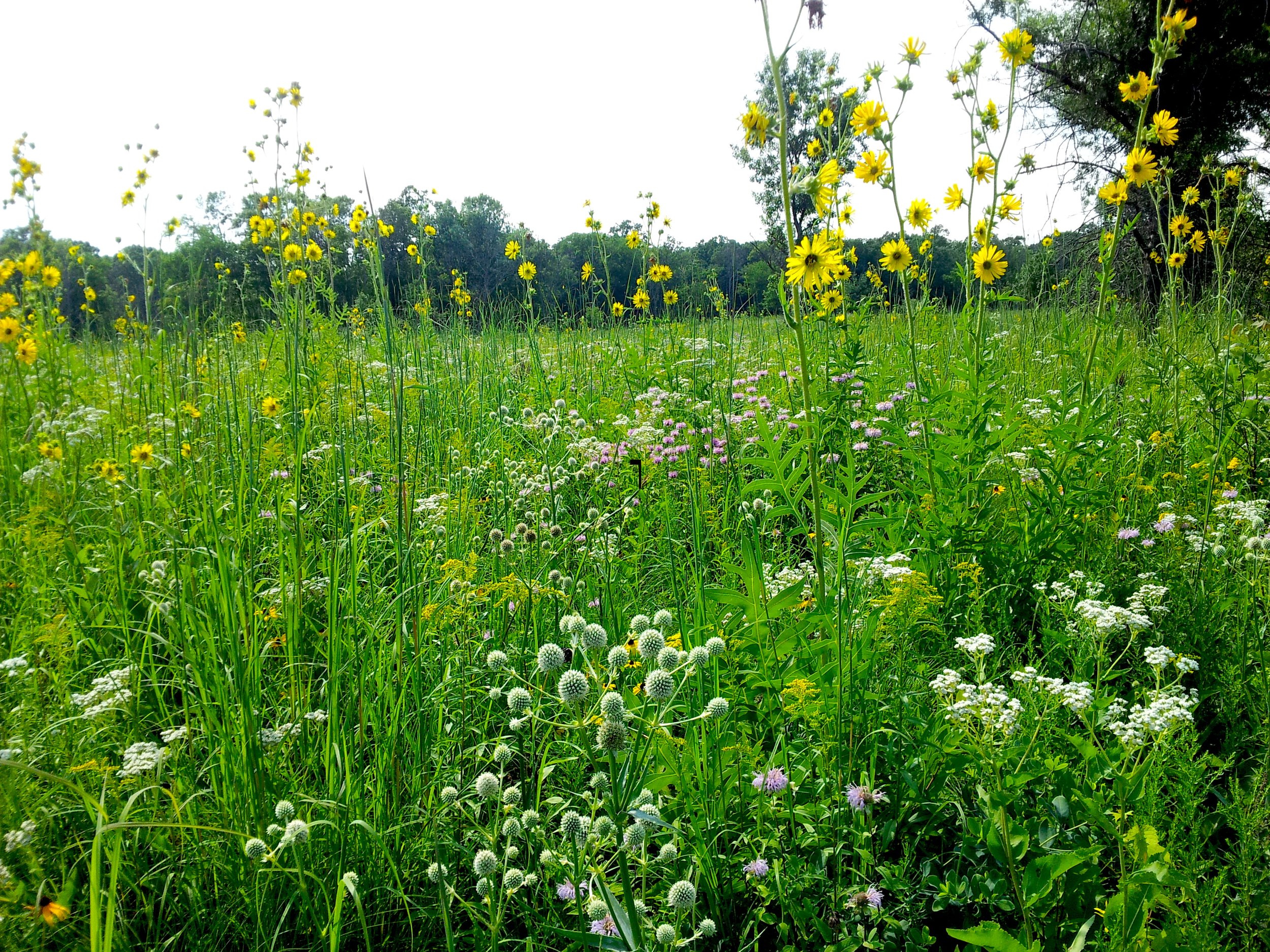Compass Plant in a Prairie Dropseed sod with White Prairie Clover, Purple Prairie Clover, Wild Quinine and Prairie Dock.
Compass Plant (Silphium laciniatum) is a perennial giant of the prairies, reaching six to ten feet tall when mature. Its taproot can grow over 7ft into the ground, and Compass plants have been known to live for over 50 years. It prefers full sun and tolerates moist to dry soil conditions. The drier the soil, the shorter the flowering stem. Sometimes the flowering stem will get pruned by deer grazing early in the season resulting in a shorter flowering stem. The gold flowers have broad, long petals that help them standout from a distance. In a native meadow planting Compass Plant is an easy standout aesthetically. The foliage is drought resistant in the sense that in the case of drought, the foliage will not visually degrade in response the stress. Long-tongued bees are important pollinators of this plant, including bumblebees, miner bees, and large leaf-cutting bees. Sulfur Butterflies, Monarchs and other butterflies also visit the flowers for nectar.
Compass plant orients its leaves to the sun (read below).
It's called a compass plant because the "front" side of the leaf that does most of the photosynthesis faces east to catch morning sunlight in the cooler part of the day. The thin margin of the leaf is pointed south, minimizing sunlight exposure during the hottest part of the day. And the back side faces west. This orientation is especially true of younger, immature plants.
Click Images Below to Expand them.
Select/click the images above to expand them then click/tap to advance to the next picture. Also, Turn your cellphone side ways for horizontal pictures, and straight up and down for vertical pictures.
Compass Plants produce excellent perching plants for grassland and native meadow birds. You may notice a concentration bird droppings on around tall meadow plants like Compass Plants because of their prime perching disposition, acting as a bit of natural fertilizer. The droppings wash off after a few rain events. Goldfinches and native rodents will eat the sunflower like seeds as they mature. In meadow mixes it will often take 4 full years or more for the Compass Plant to bloom, especially in clay soils as it takes its time drilling the taproot deep into the subsoil. Plants as deeply rooted as Compass Plant have excellent staying power among vigorous prairie grasses such as Big Bluestem, Indian Grass, Switch Grass, Little Bluestem, and Prairie Dropseed. This is also true of its cousins - Prairie Dock, Cup Plant, and Rosinweeds. This whole genus is packed full of long lived, large growing native perennials excellent for native meadow plantings. In gardens Compass Plants often flop due to lack of enough root competition. But within native prairie/native meadow plantings they are provided with enough root competition to stand high and mighty among the other native vegetation.
Germination Tips for Plugs: Cold moist Stratify for 40 or more days then sow 1/8th inch below surface.
Receive 40% off of our Native Plant Propagation Guide/Nursery Model book when purchased as a package. deal with either our Native Meadowscaping book or our Native Plant Agriculture book at this link.
Learn about what our Native Meadowscaping book has to offer here at this link.
Learn about what our Native Plant Agriculture Vol. 1 book has to offer here at this link.
Learn about what our Native Plant Propagation Guide & Nursery Model has to offer here at this link.









